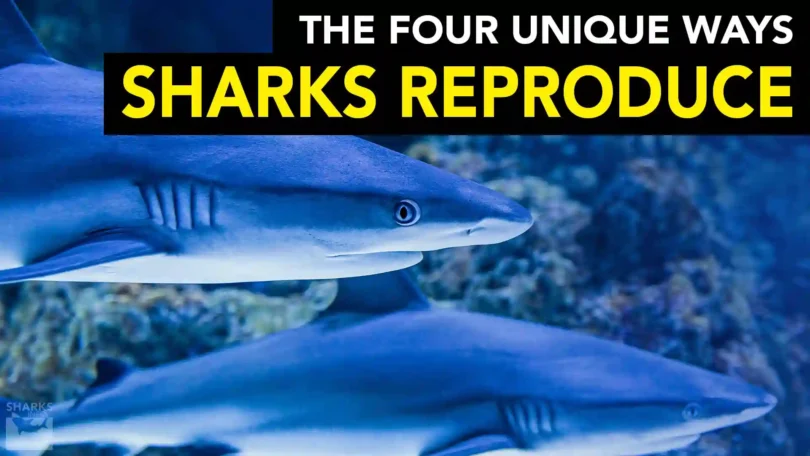Sharks are known for their powerful jaws, sharp teeth, and streamlined bodies that allow them to swim at incredible speeds. But many people are not aware of the fact that sharks reproduce in a variety of unique ways. In this article, we will explore the four unique ways sharks reproduce and how these methods have helped them survive for over 400 million years.
The Four Unique Ways Sharks Reproduce
There are four ways from which sharks reproduce; let’s jump into the first way which is mentioned below:
Way 1: Oviparity (Egg-Laying)
Oviparity is the process of reproduction in which an organism lay eggs. Sharks that reproduce through oviparity are called oviparous sharks. They lay eggs in the form of a hard case called a “mermaid’s purse” that protects the developing embryo from the outside environment. Oviparous sharks include species such as the horn shark, the Port Jackson shark, and the bamboo shark.

One of the advantages of oviparity is that the eggs are protected from predators and harsh conditions. The eggs also have a food supply, which allows the developing shark to grow and develop without having to fend for itself. Oviparous sharks also have the ability to lay multiple eggs at once, increasing the survival rate of offspring.
Way 2: Viviparity (Live-Bearing)
Viviparity refers to the process of giving birth to live young. Sharks that reproduce through viviparity are called viviparous sharks. These sharks carry their young in the uterus and give birth to fully developed, live young. Viviparous sharks include species such as the bull shark, the tiger shark, and the lemon shark.

One of the advantages of viviparity is that the young are born fully developed and ready to fend for themselves. Viviparous sharks also have the ability to give birth to multiple young at once, which increases the chances of survival for the offspring.
Way 3: Ovoviviparity (Egg-Retention)
Ovoviviparity is a combination of oviparity and viviparity. Sharks that reproduce through ovoviviparity are called ovoviviparous sharks. These sharks carry their eggs inside the uterus until the young pup is completely developed, and then give birth to it. Ovoviviparous sharks include species such as the sand tiger shark, the sandbar shark, and the spiny dogfish shark.

One of the advantages of ovoviviparity is that the eggs are protected inside the uterus, which increases the chances of survival for the offspring. Ovoviviparous sharks also have the ability to give birth to multiple young at once, which increases the chances of survival for the offspring.
Way 4: Asexual Reproduction
Asexual reproduction is the process of reproducing without the involvement of a sperm or egg. Sharks that reproduce through asexual reproduction are called asexual sharks. These sharks can reproduce by a process called fragmentation, where a piece of the shark’s body breaks off and forms a new individual. Asexual sharks include species such as the blacktip shark, the whitetip shark, and the blue shark.
One of the advantages of asexual reproduction is that it does not require a mate. Asexual sharks also have the ability to reproduce quickly and in large numbers, which comes handy while keeping the population of sharks stable.
The Final Word
Sharks are truly amazing creatures that have evolved a variety of unique ways to reproduce. Oviparity, viviparity, ovoviviparity, and asexual reproduction are some of the methods by which they reproduce to either give birth to young ones or lay eggs. However, reproduction depends on several factors including favorable habitat and environmental conditions.







